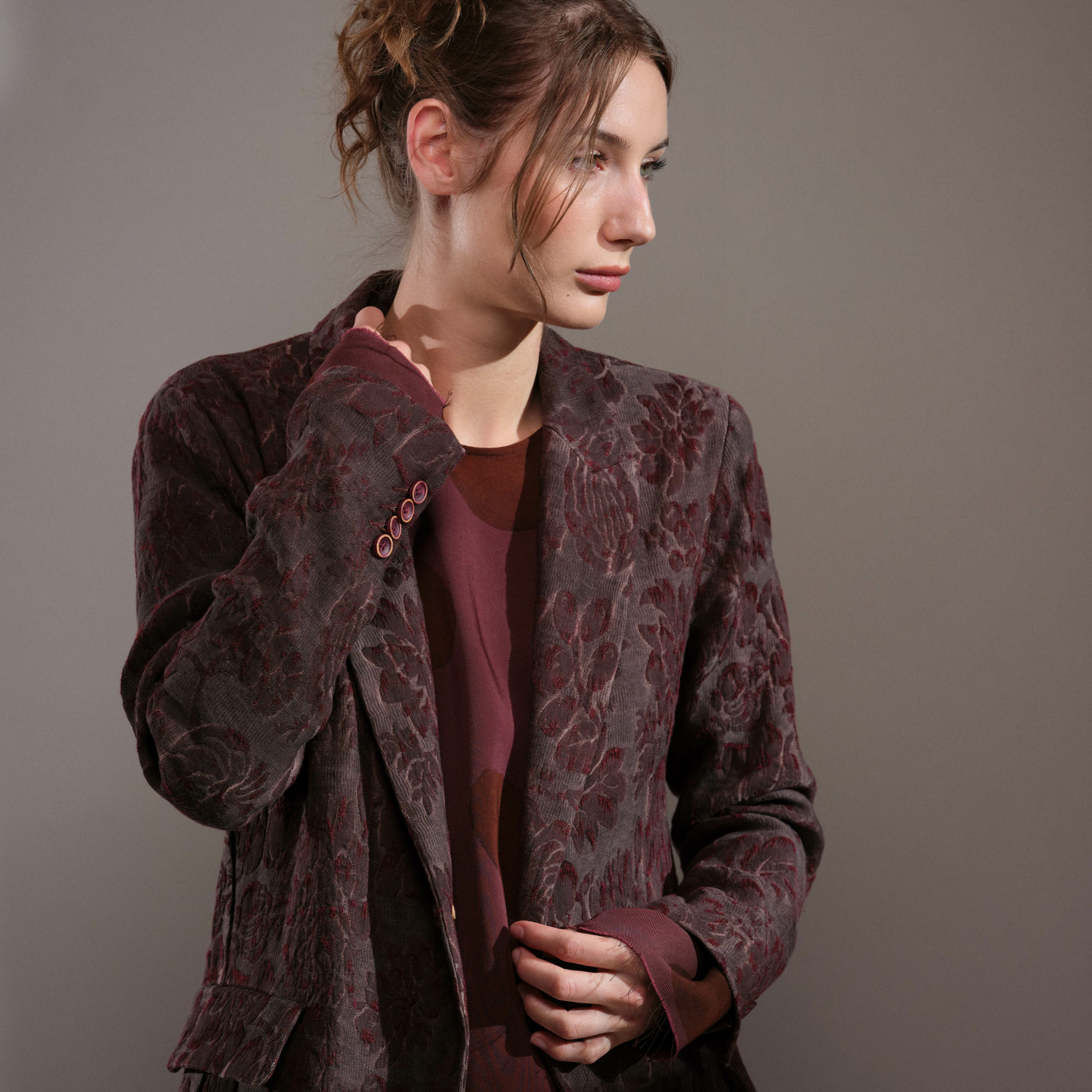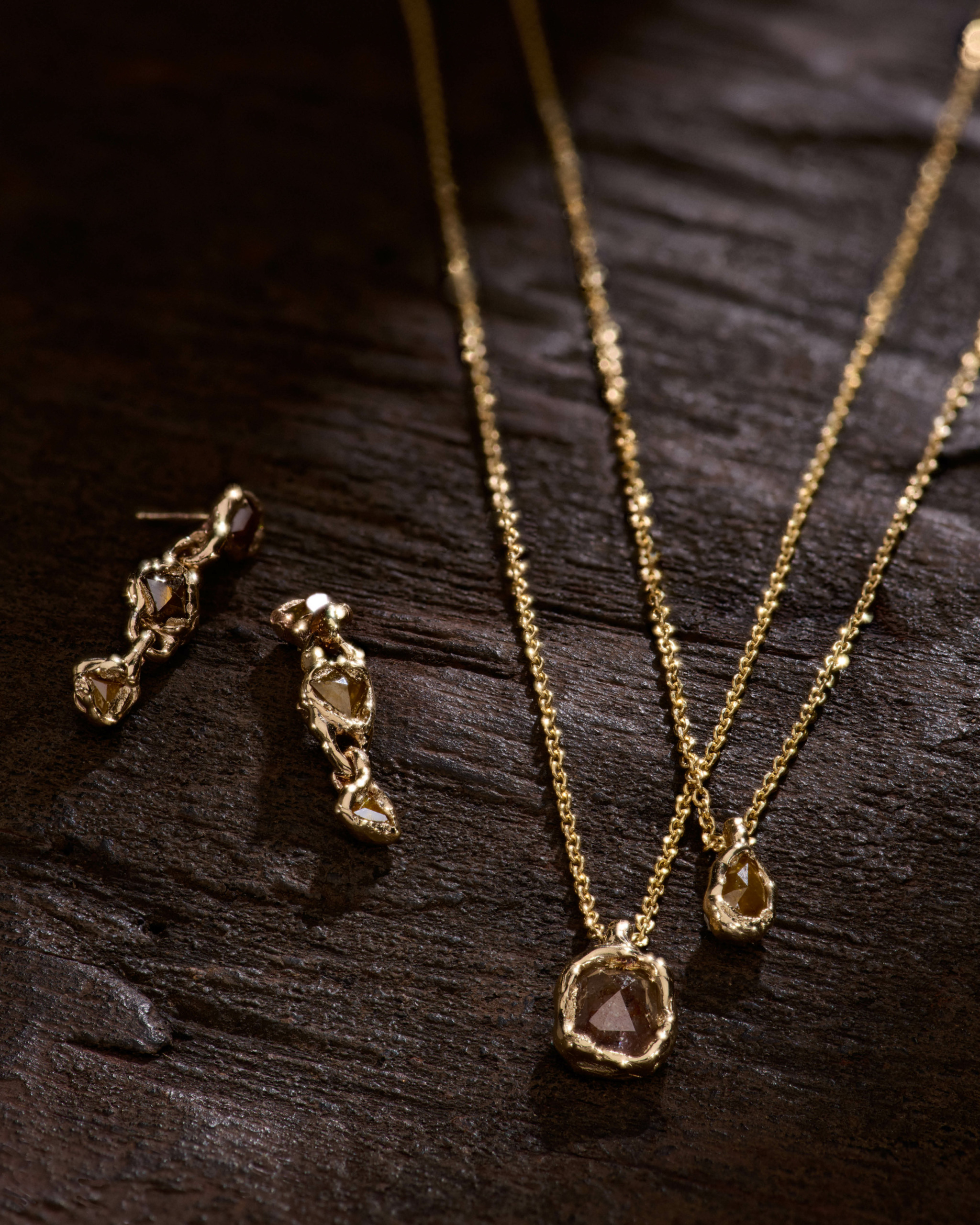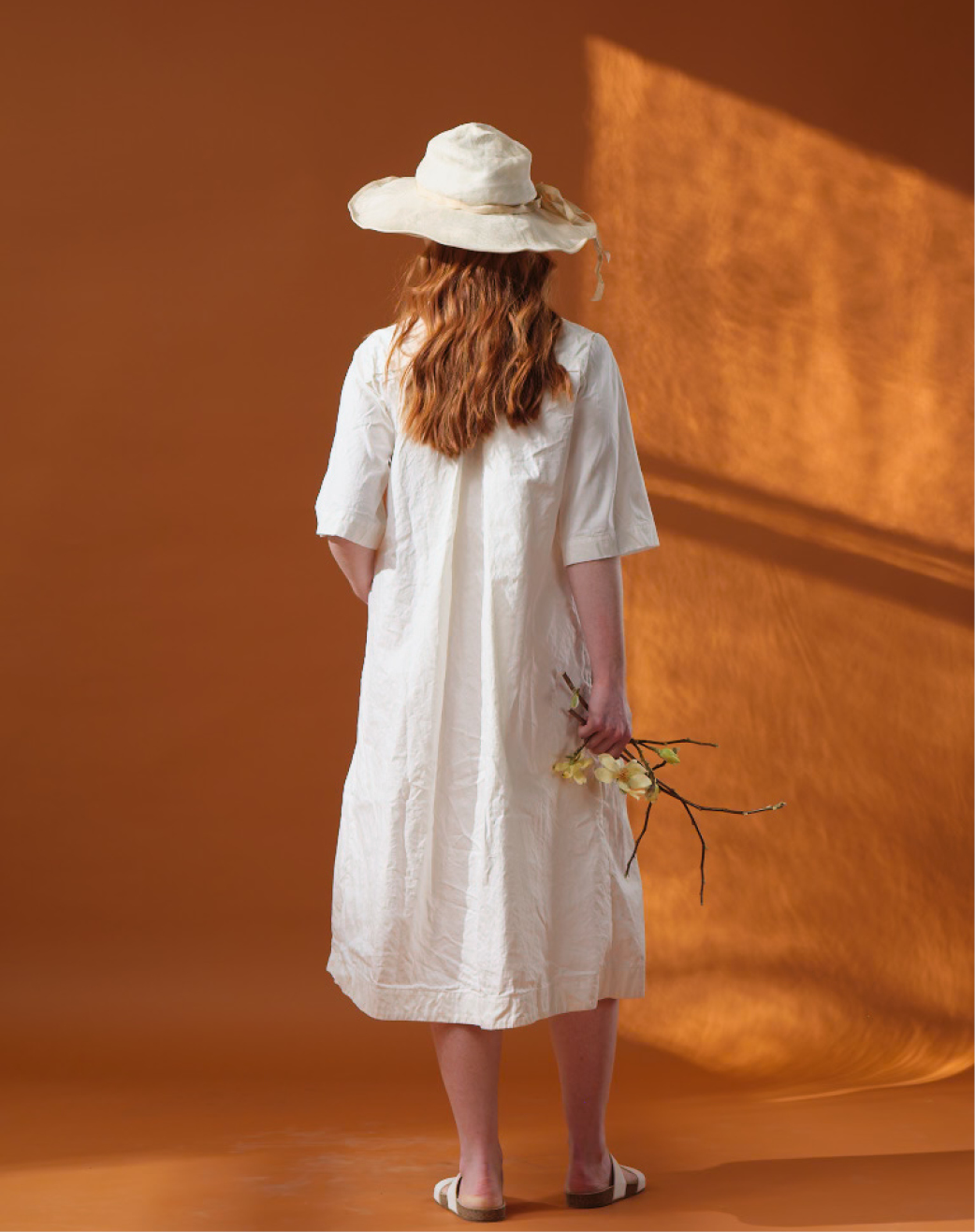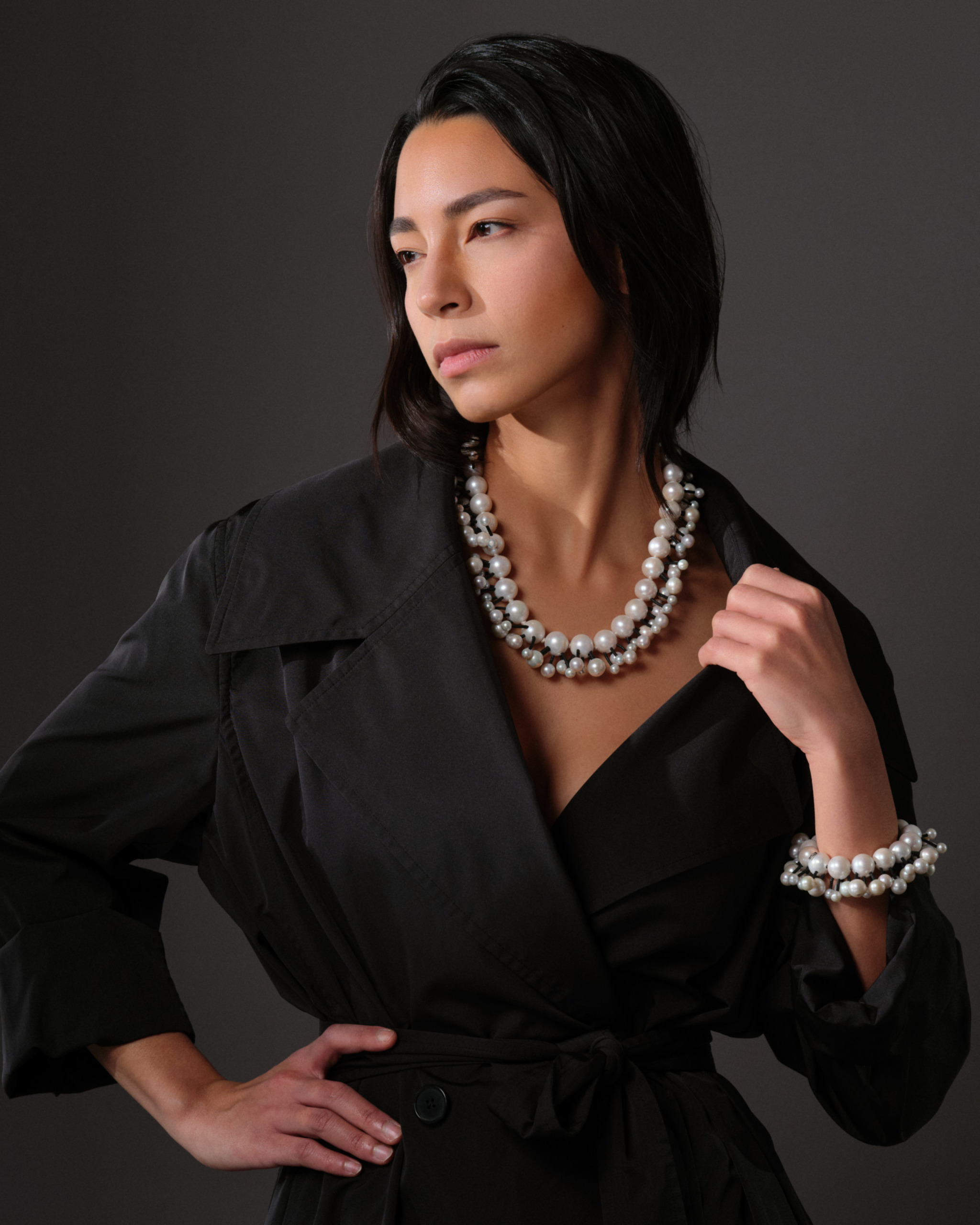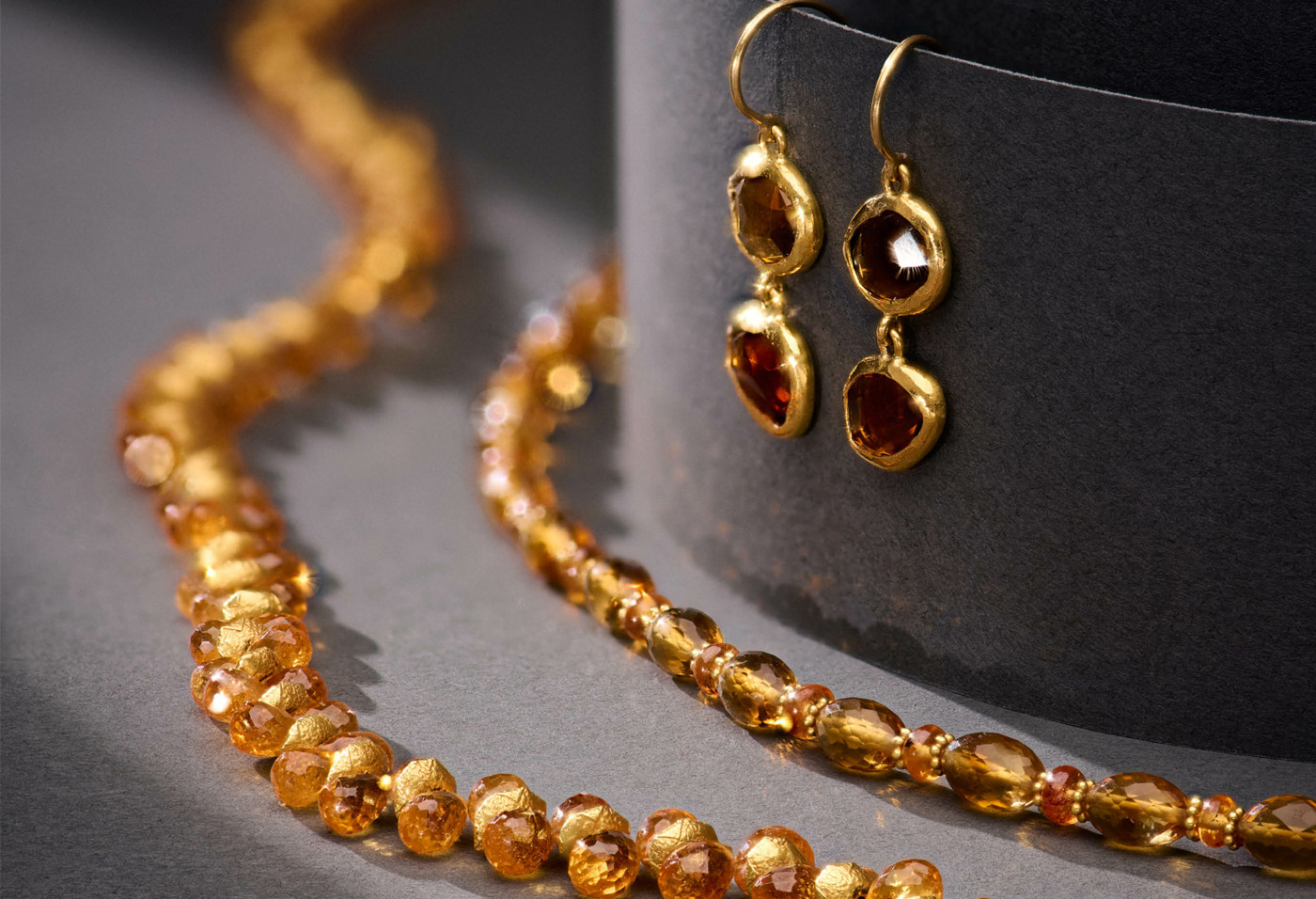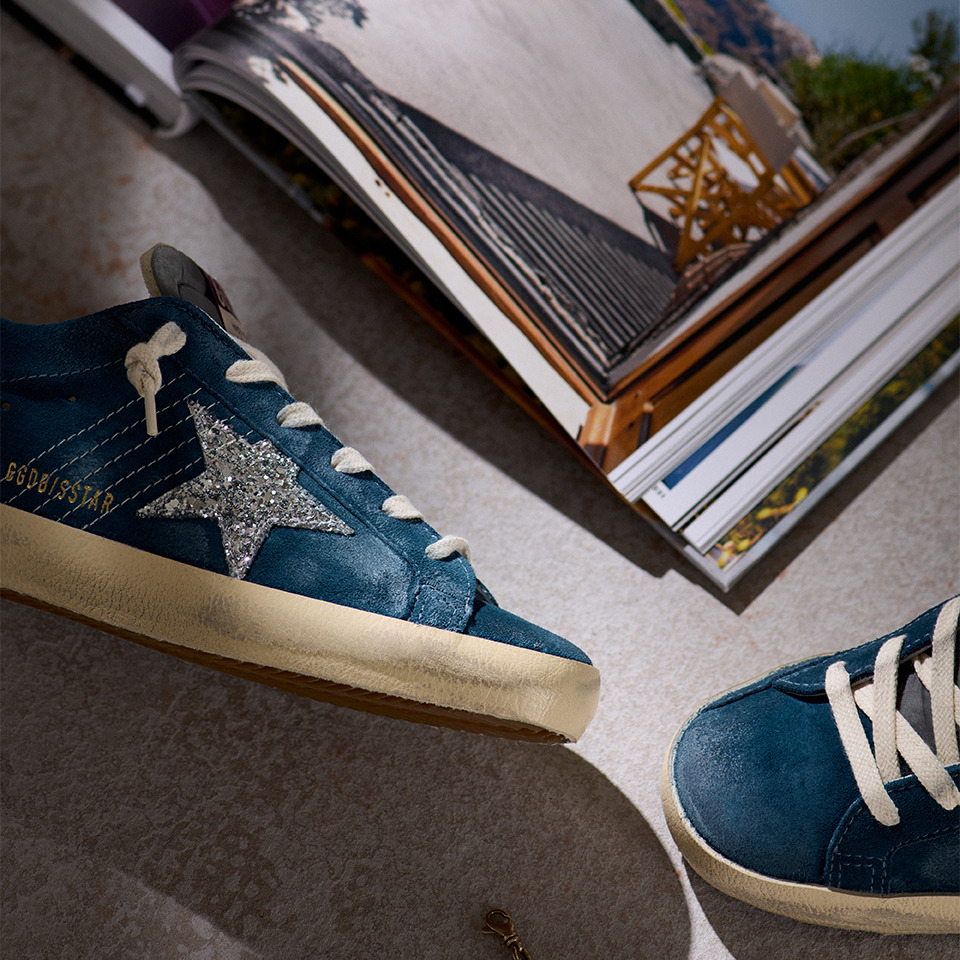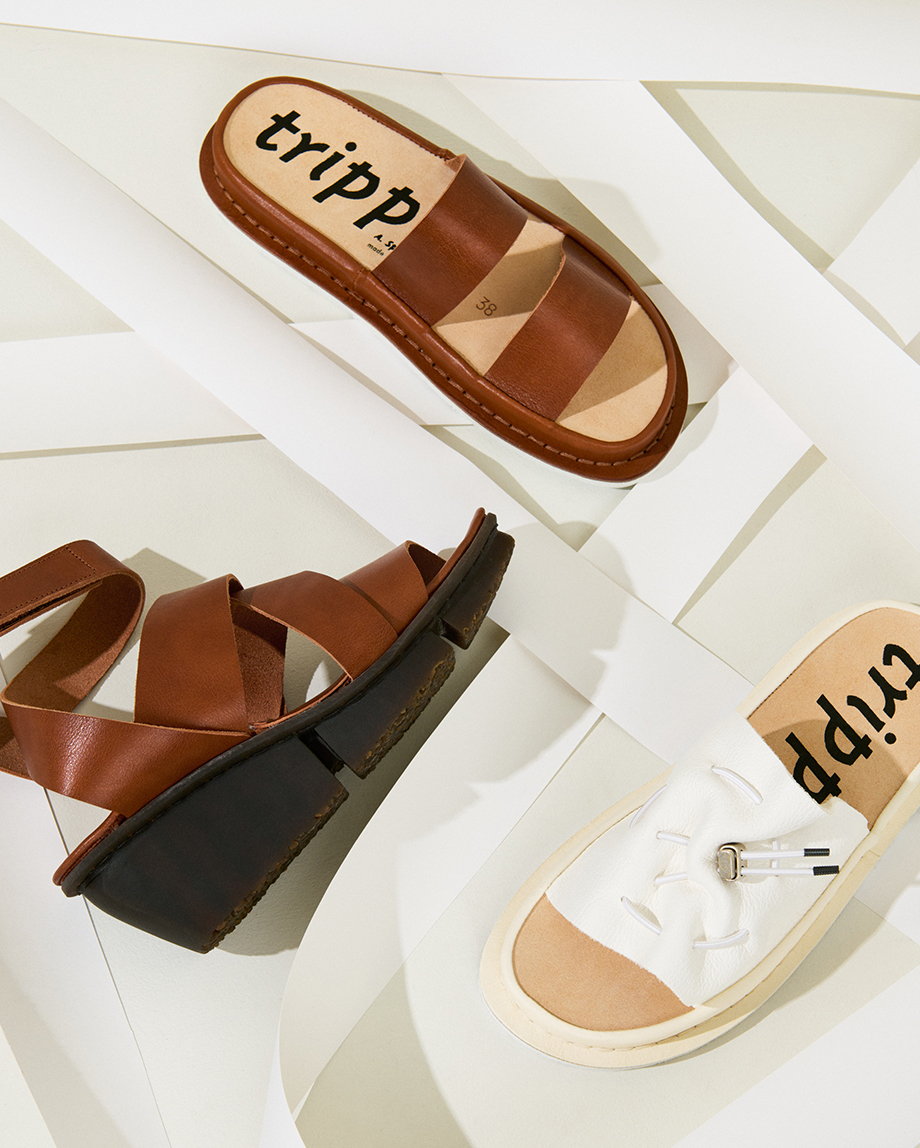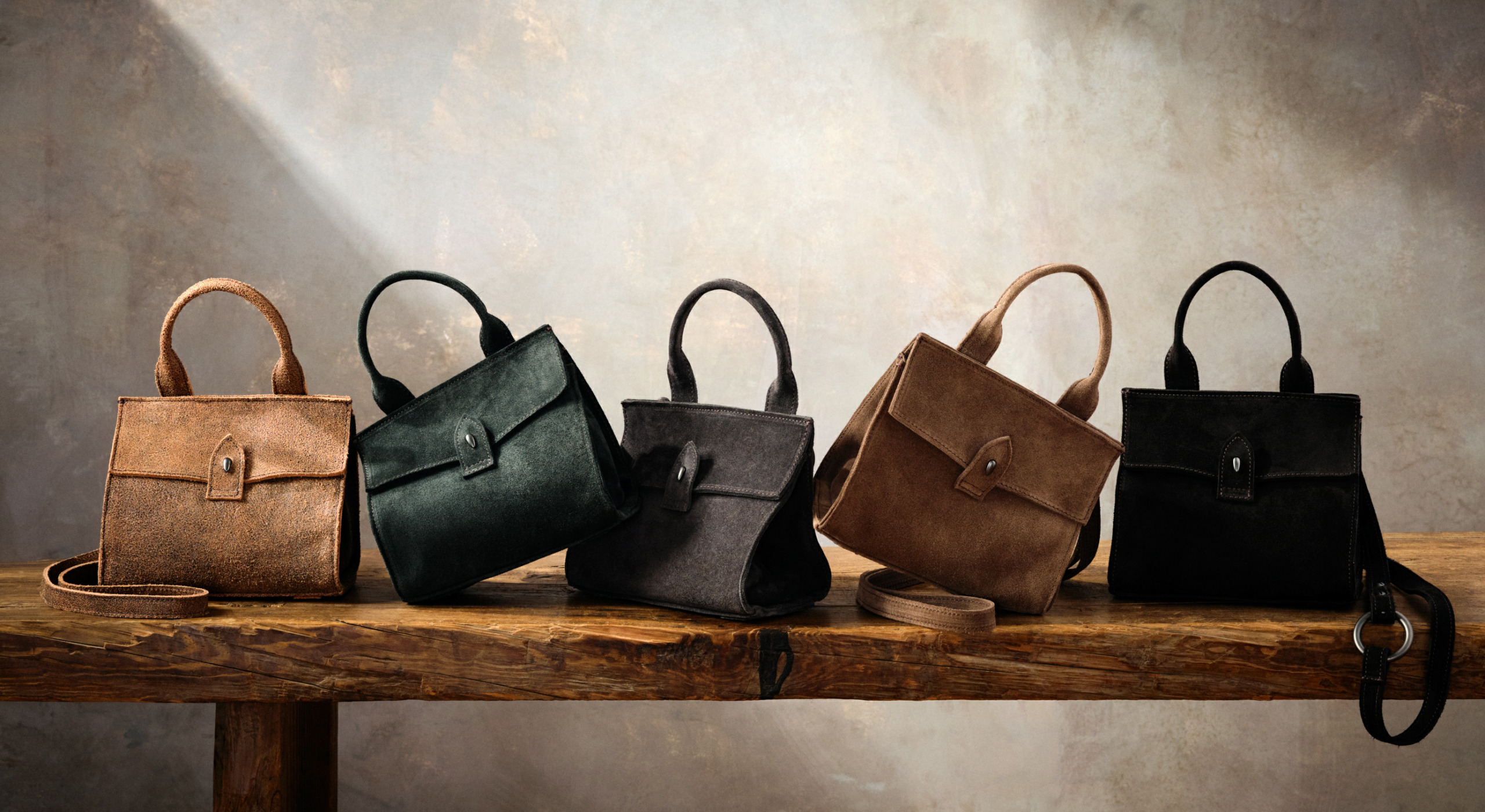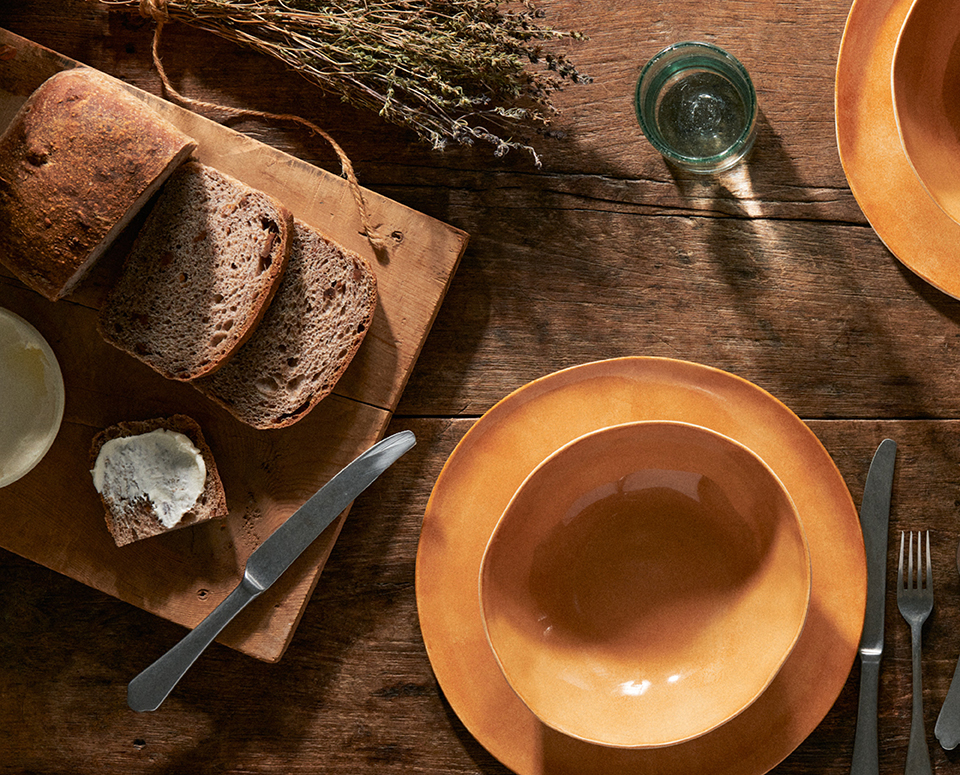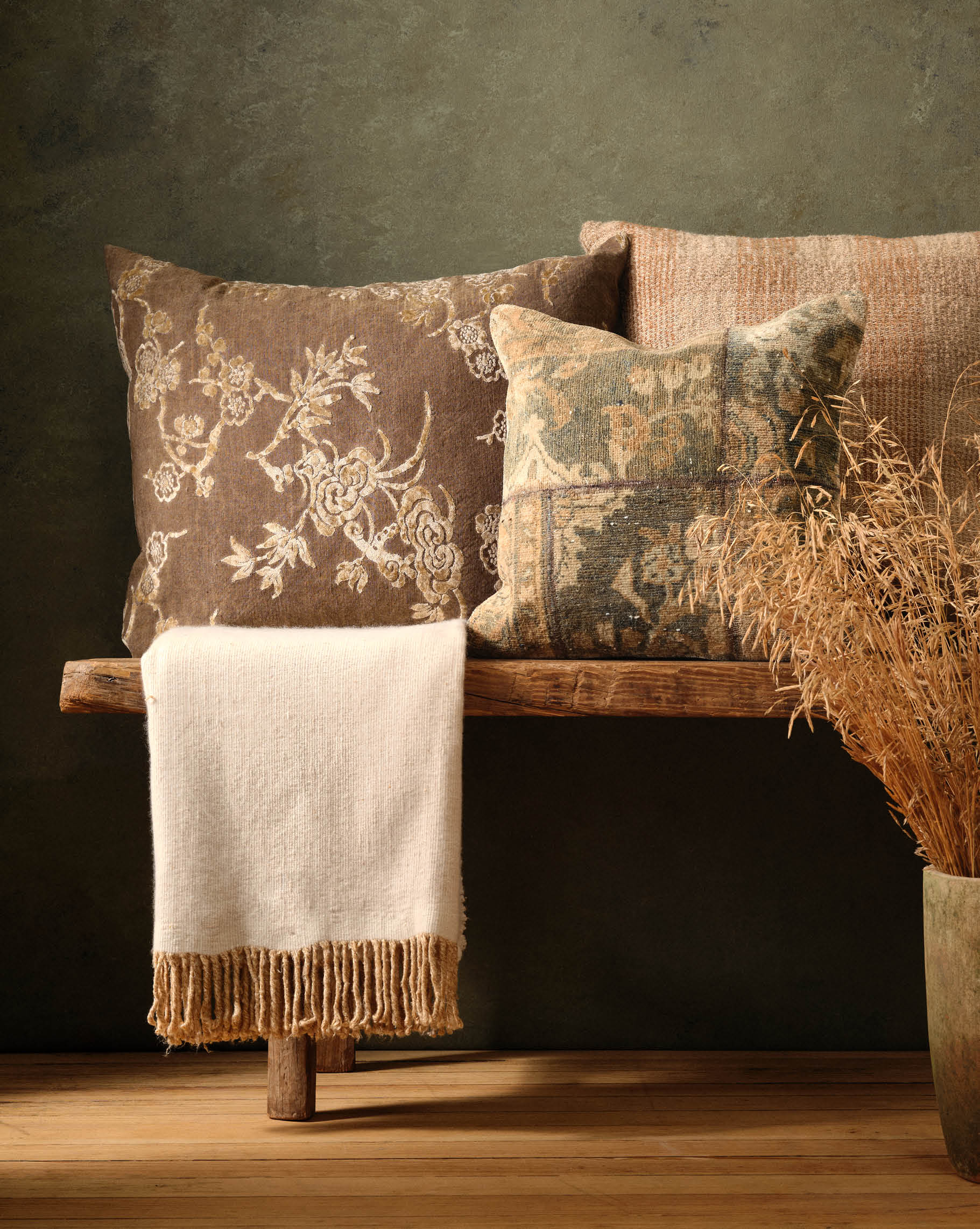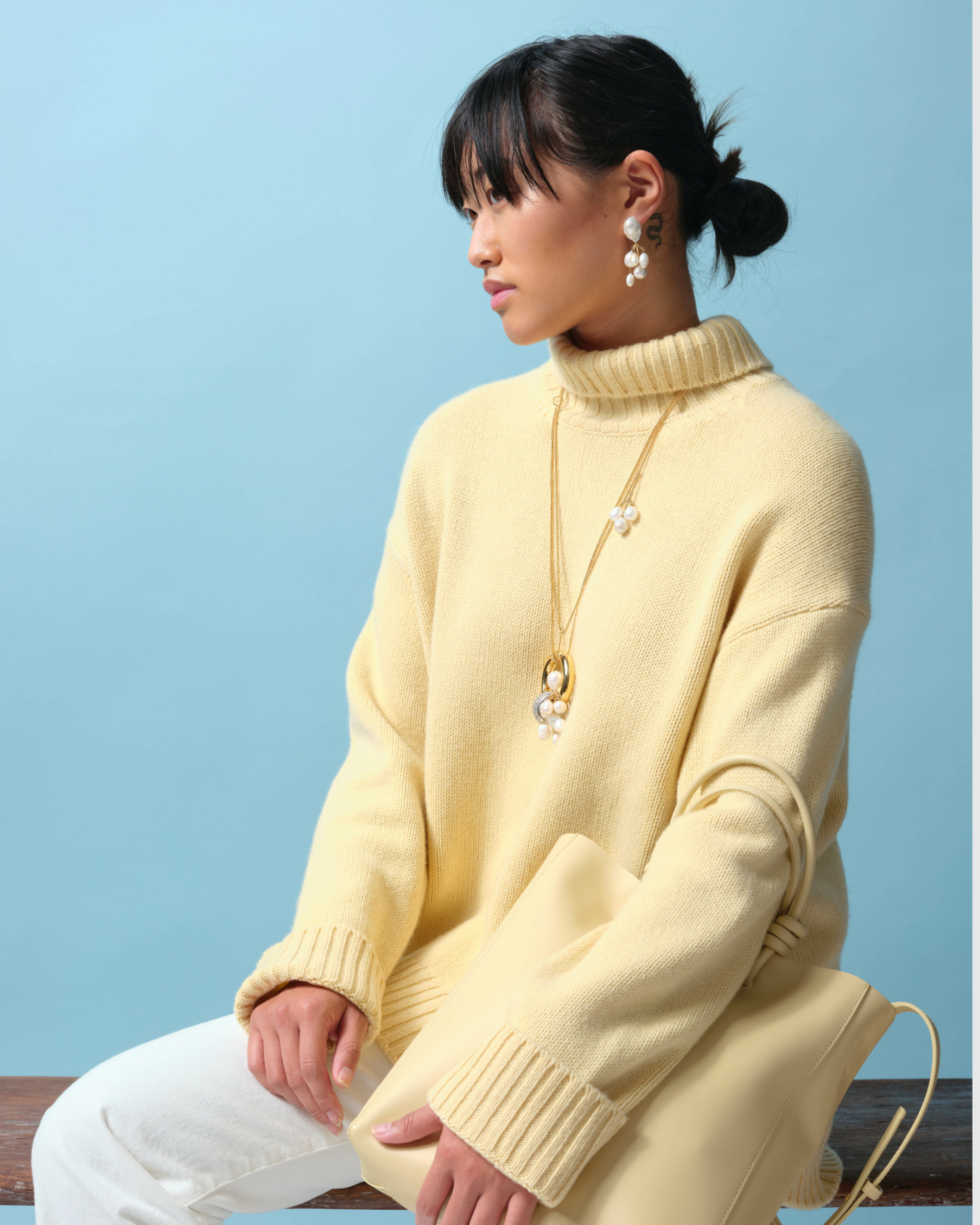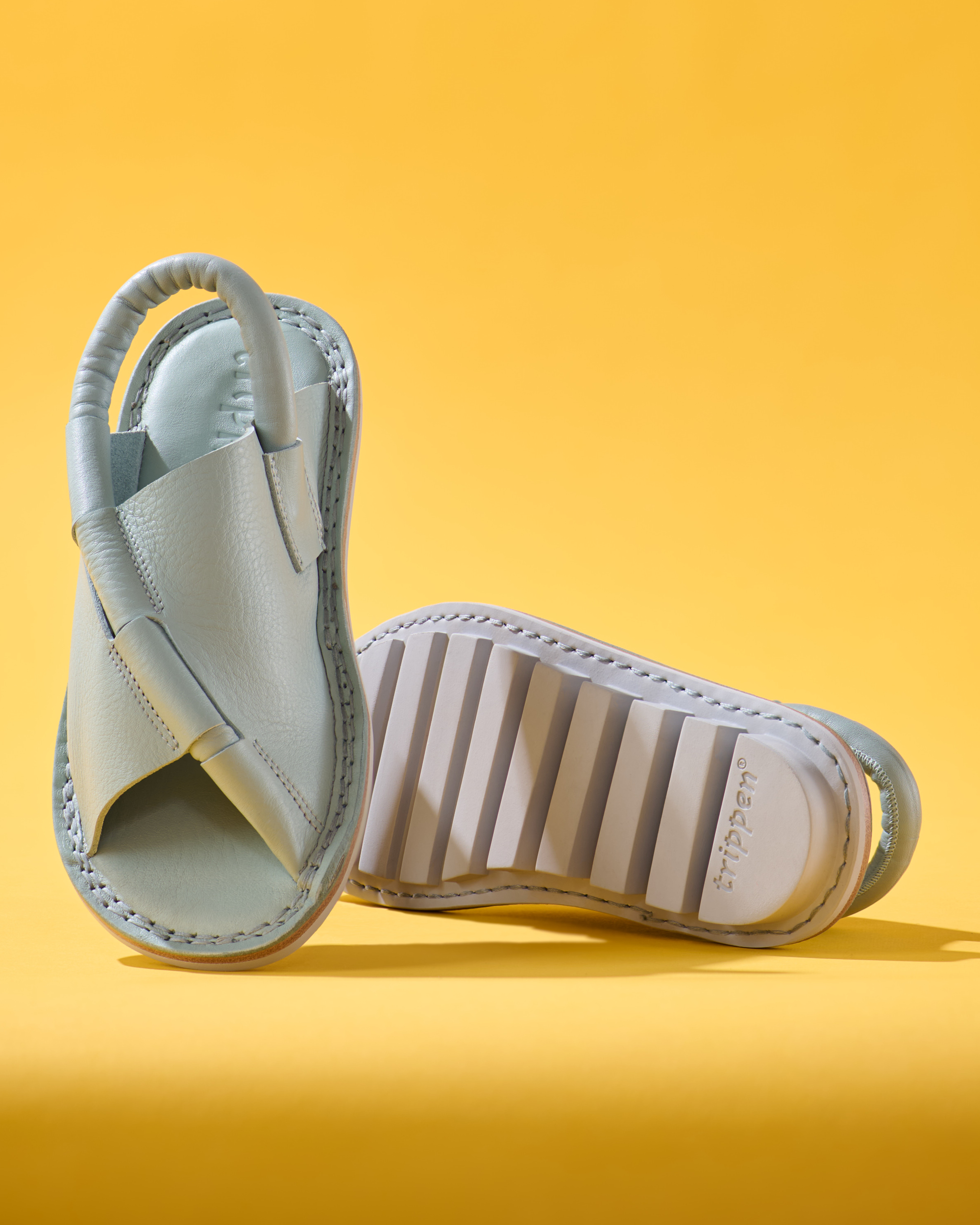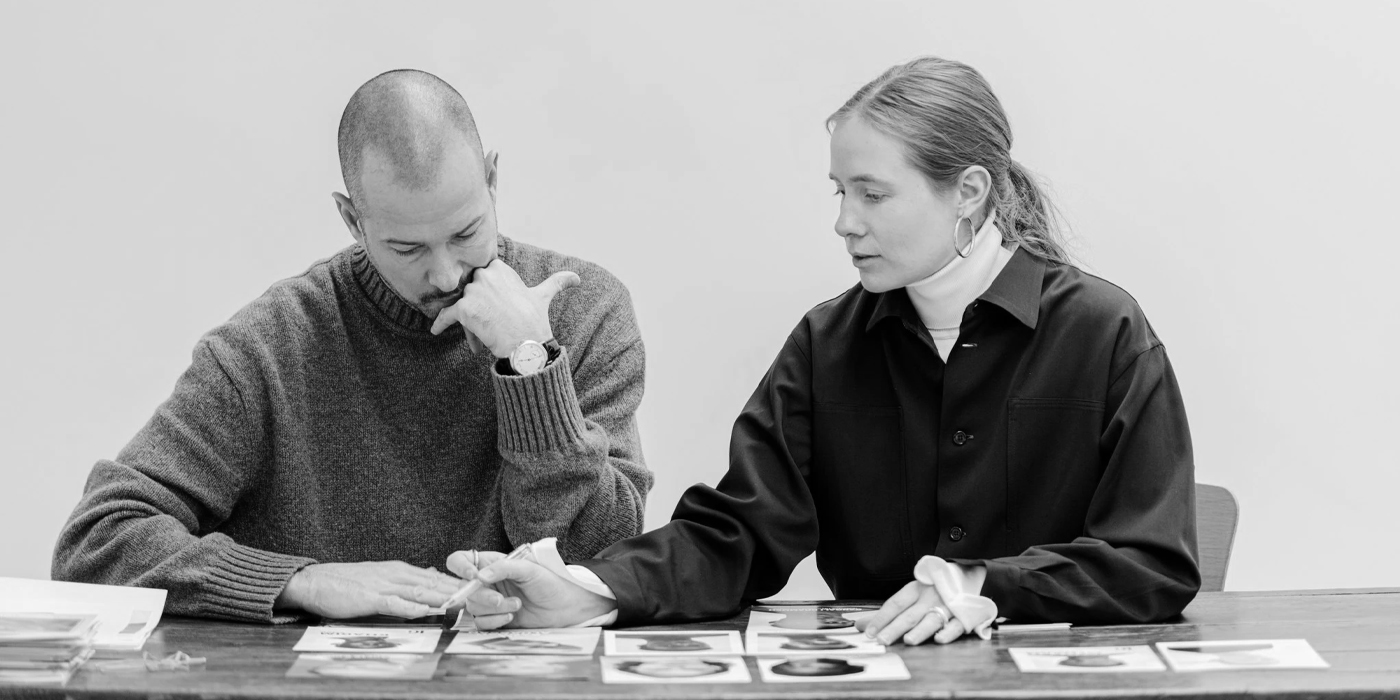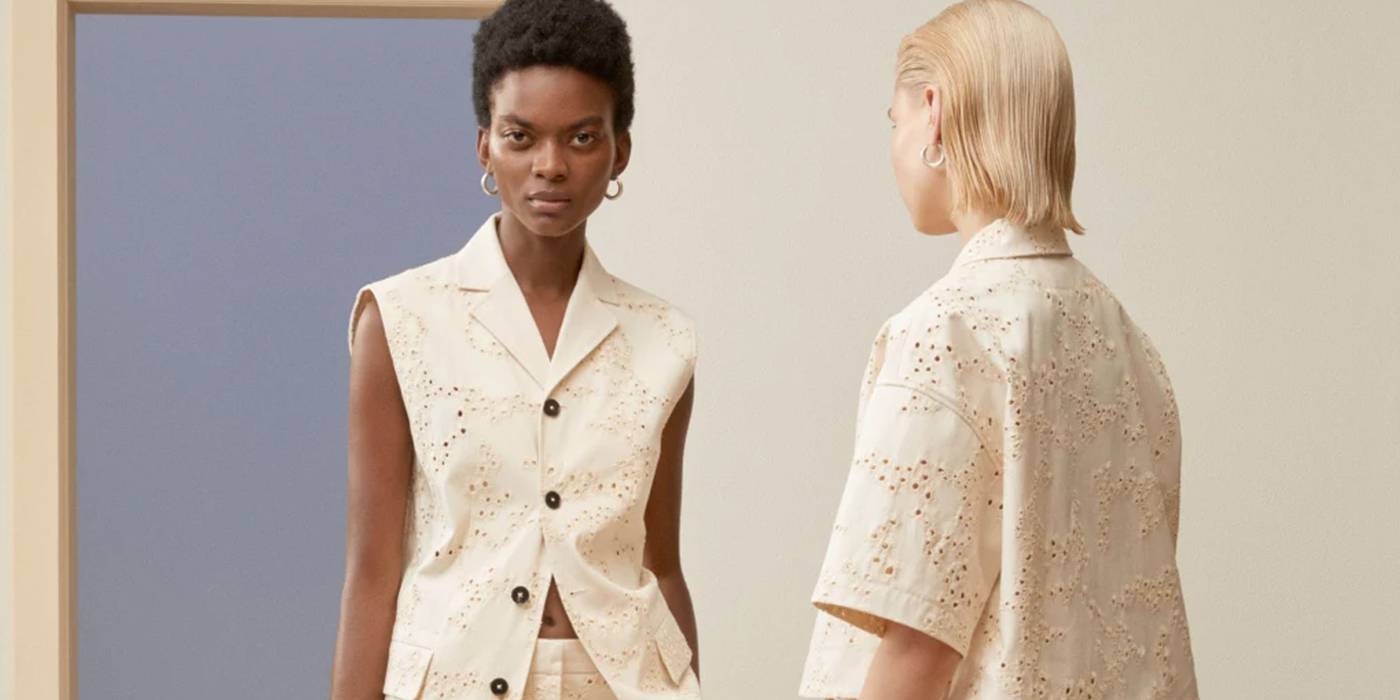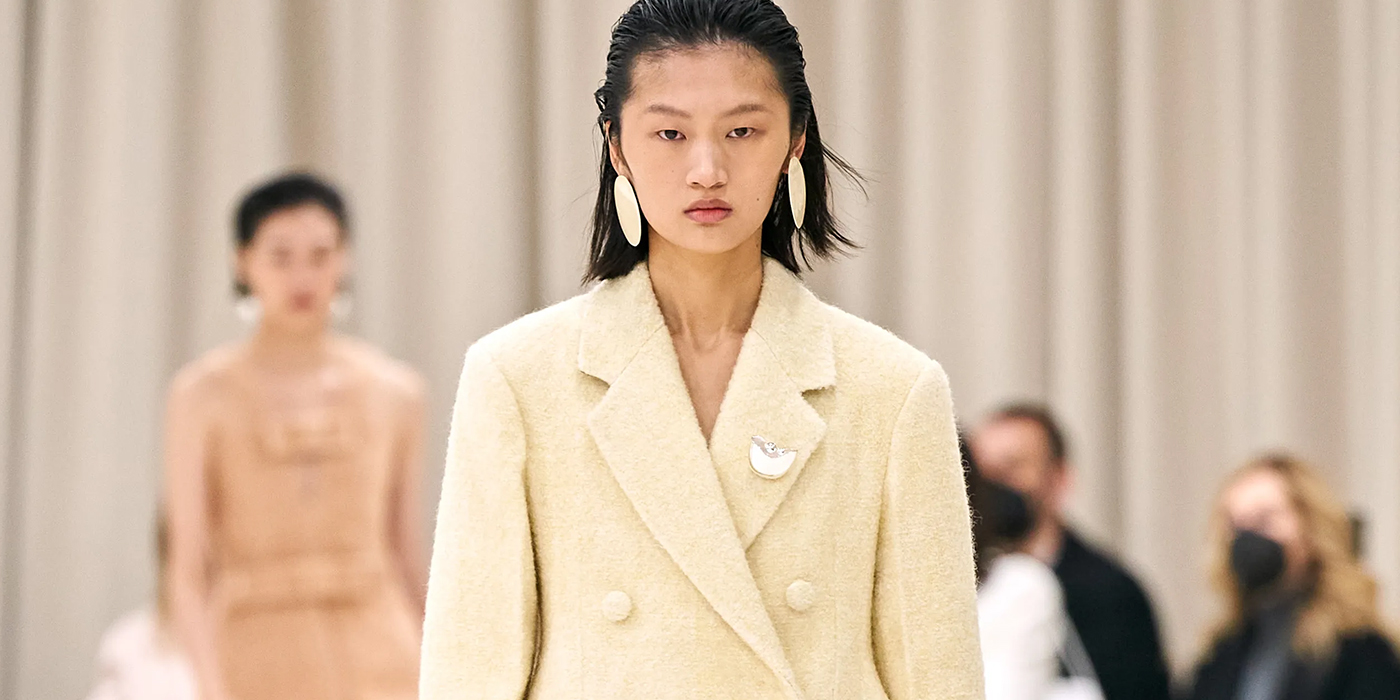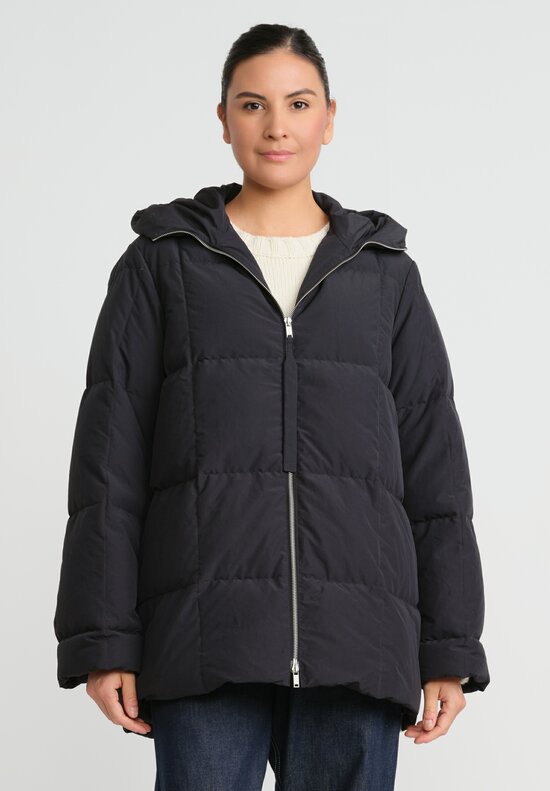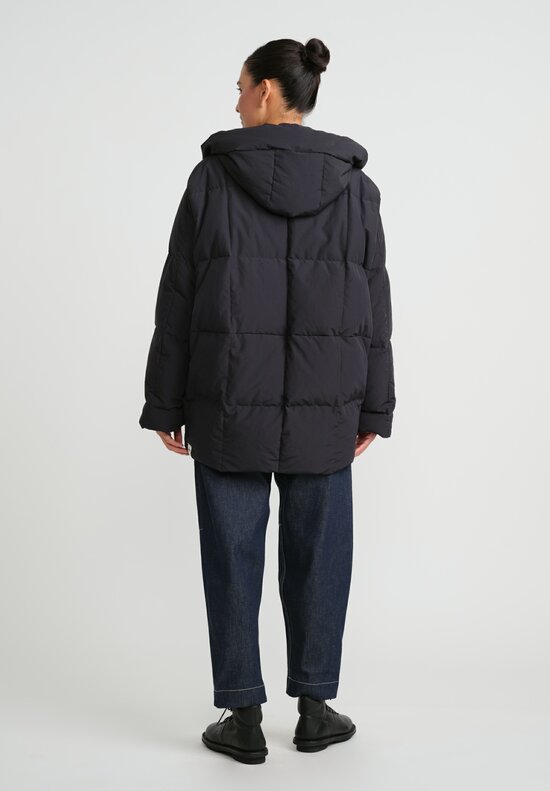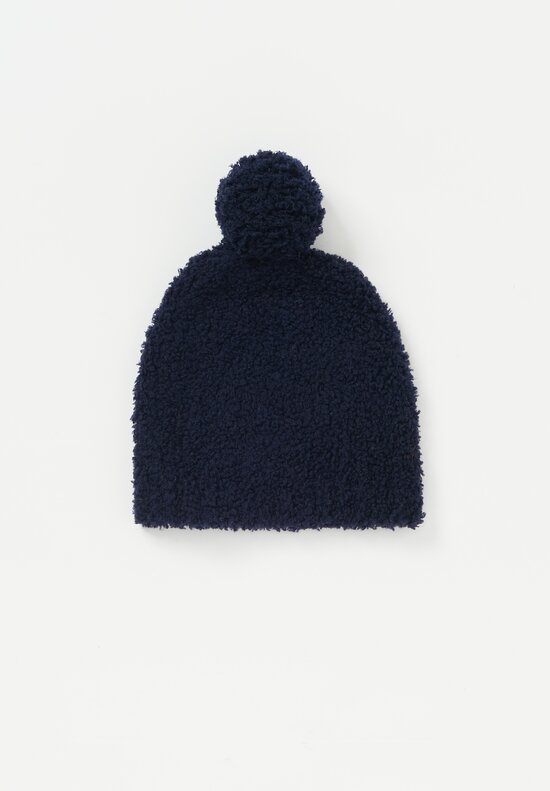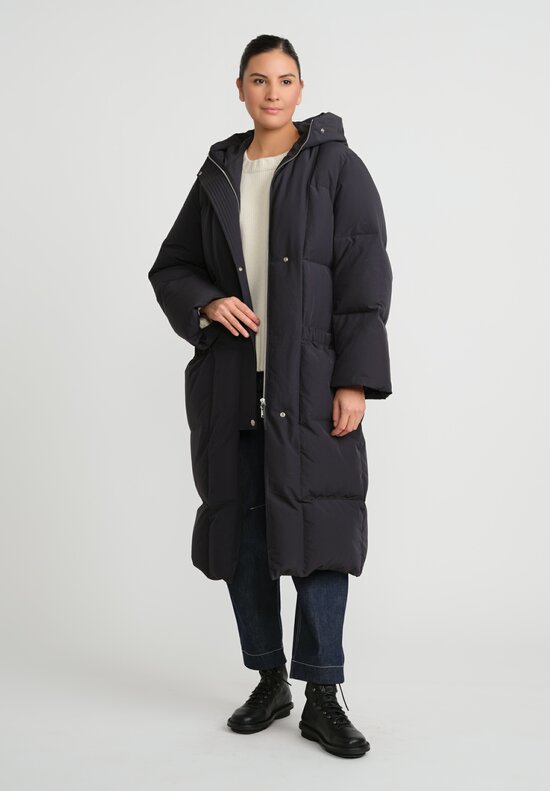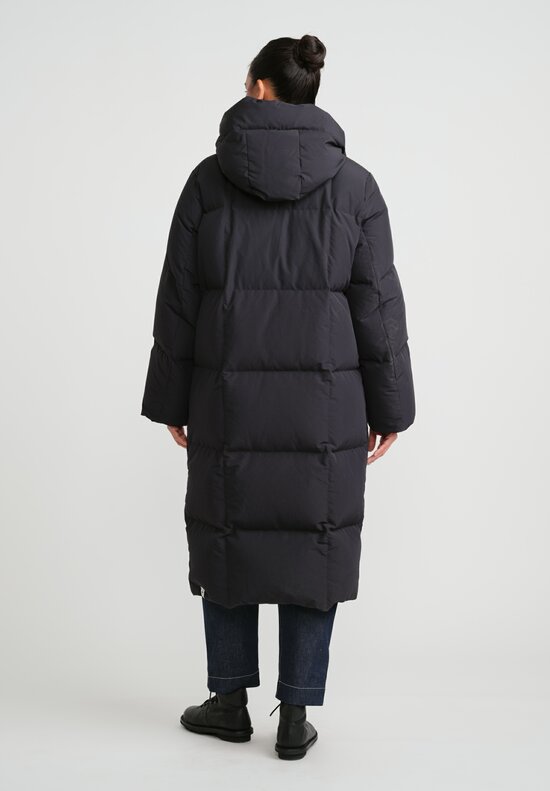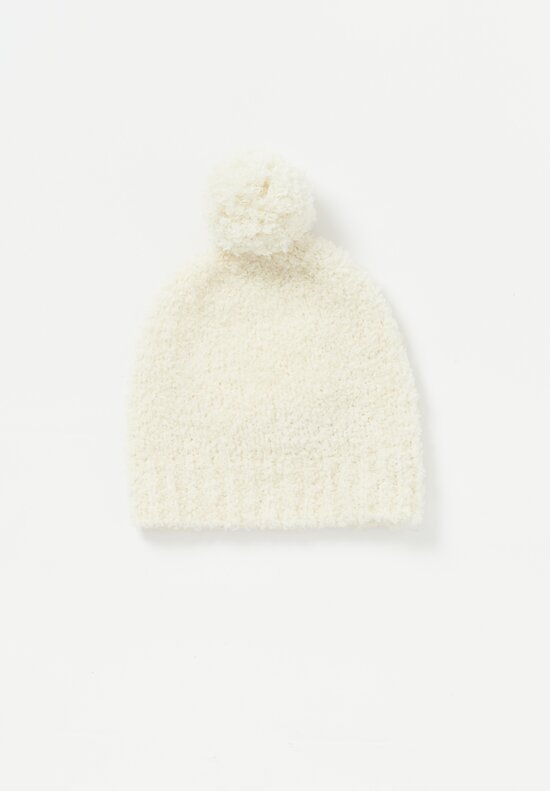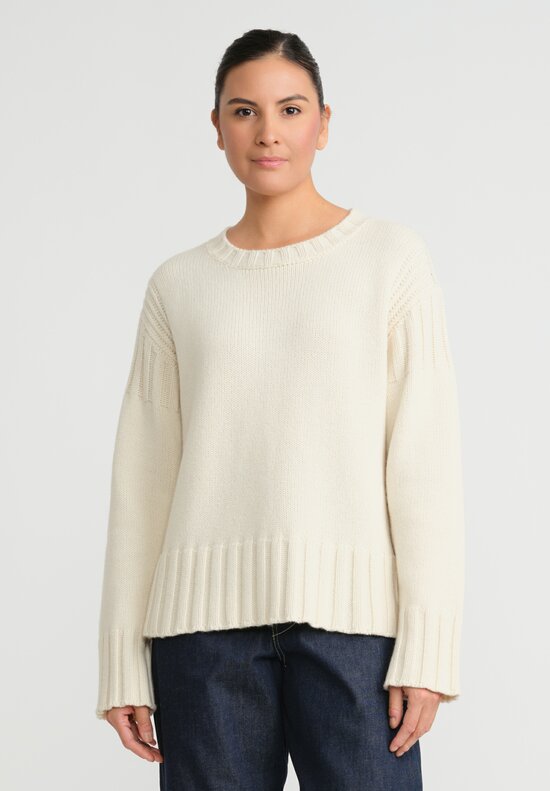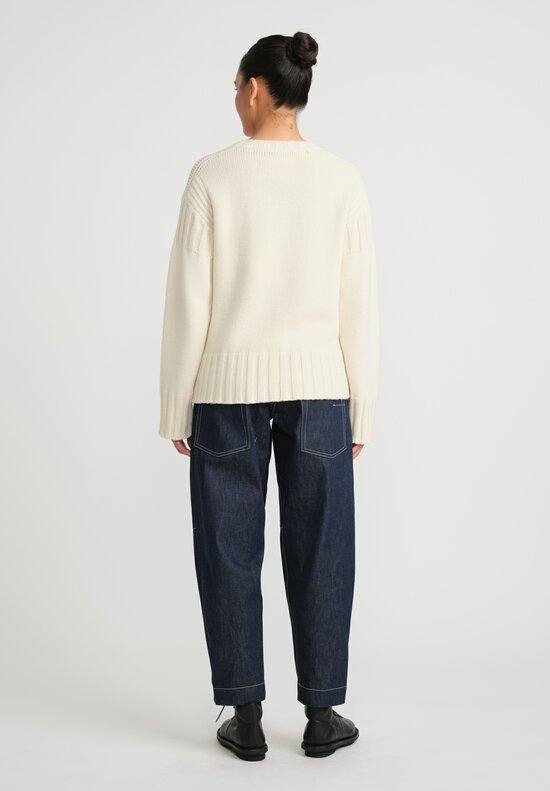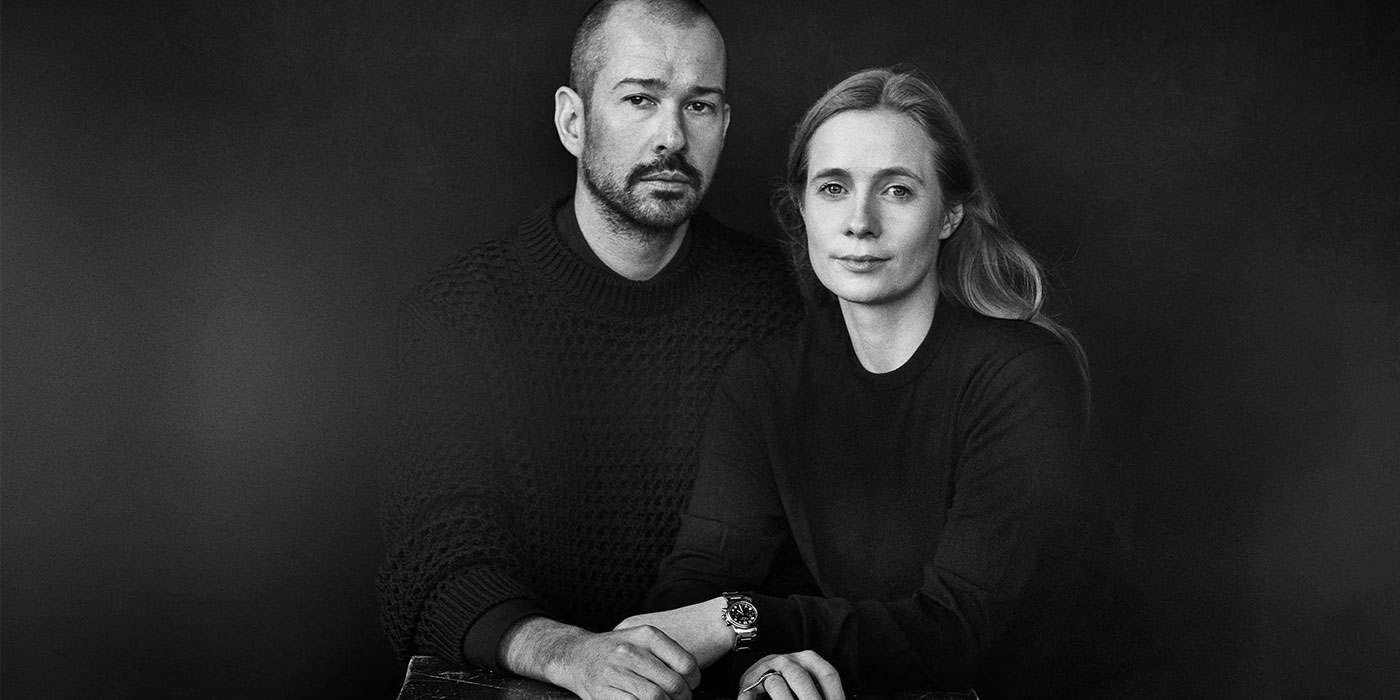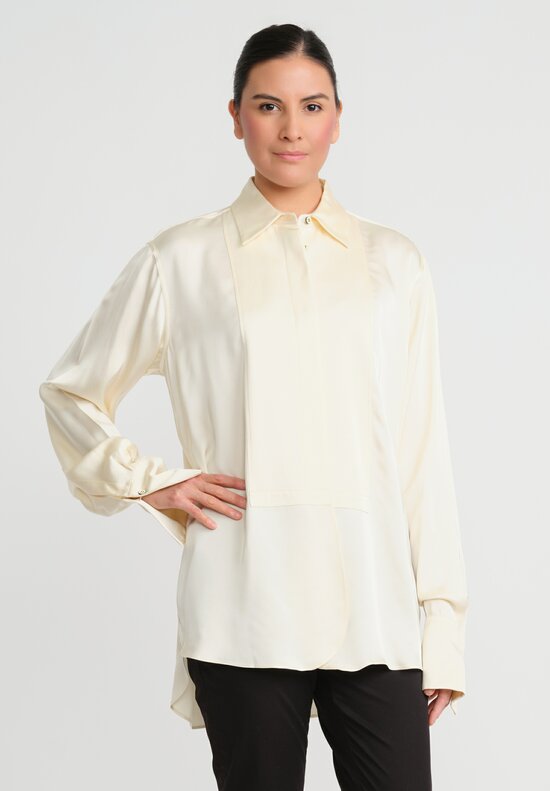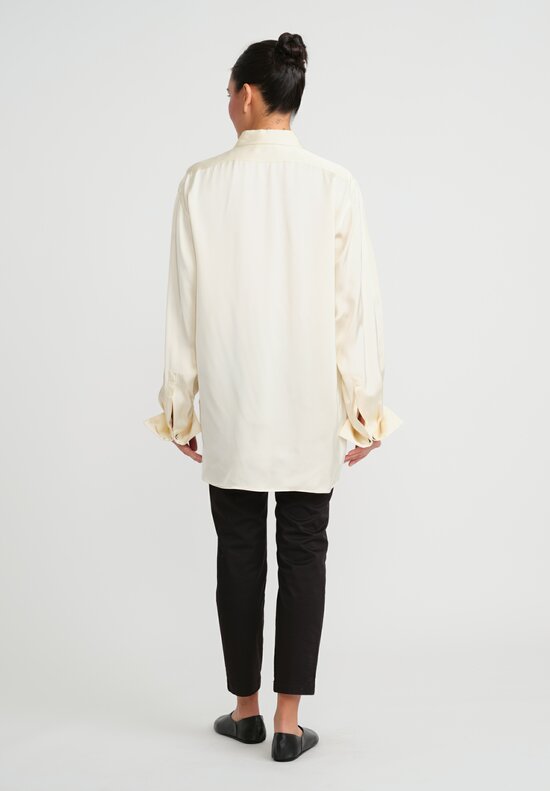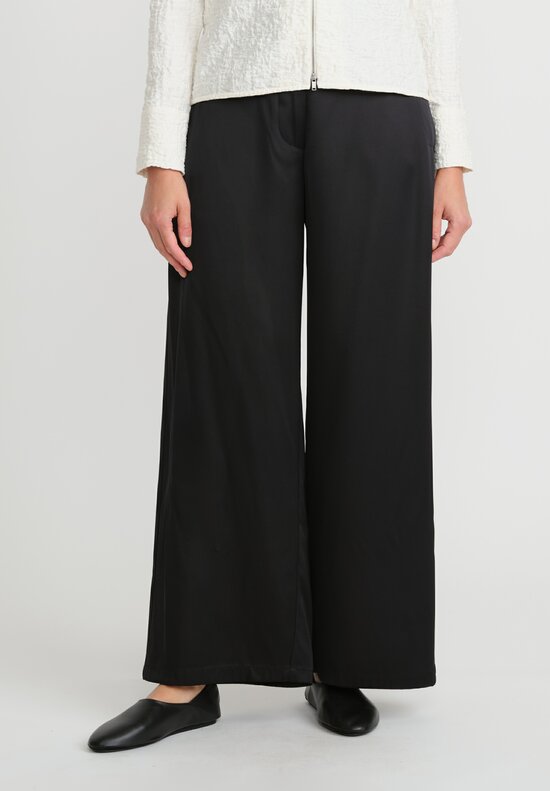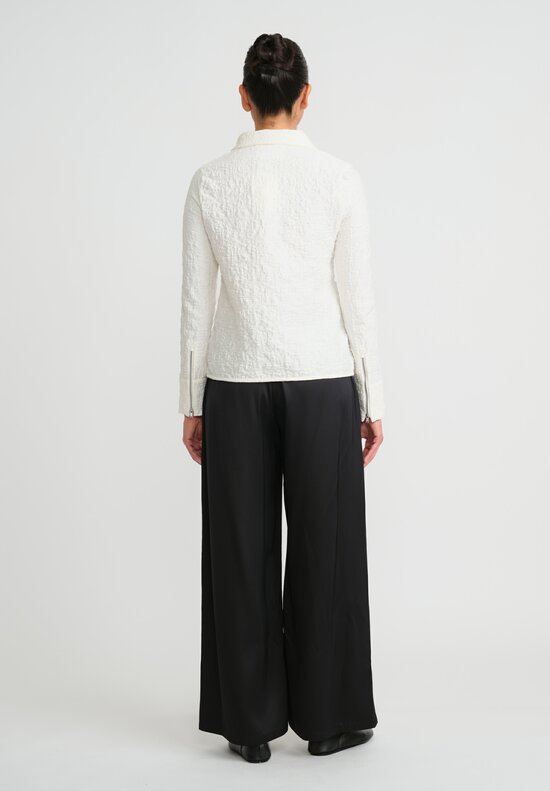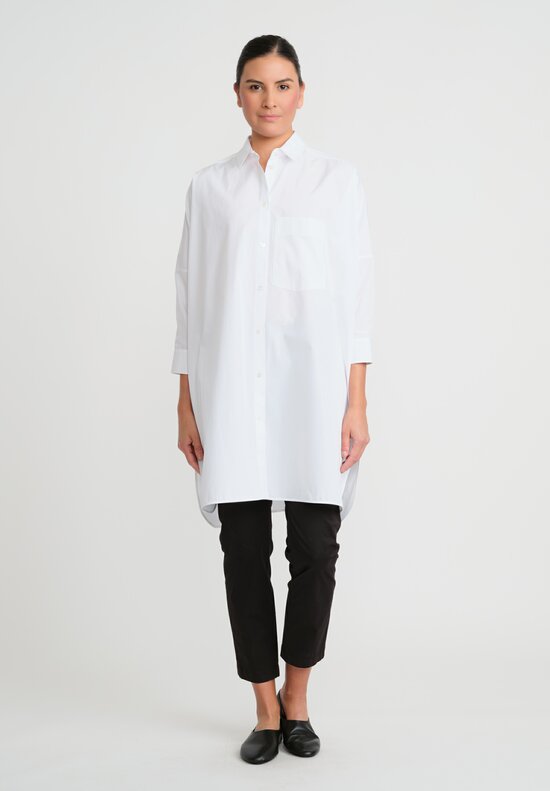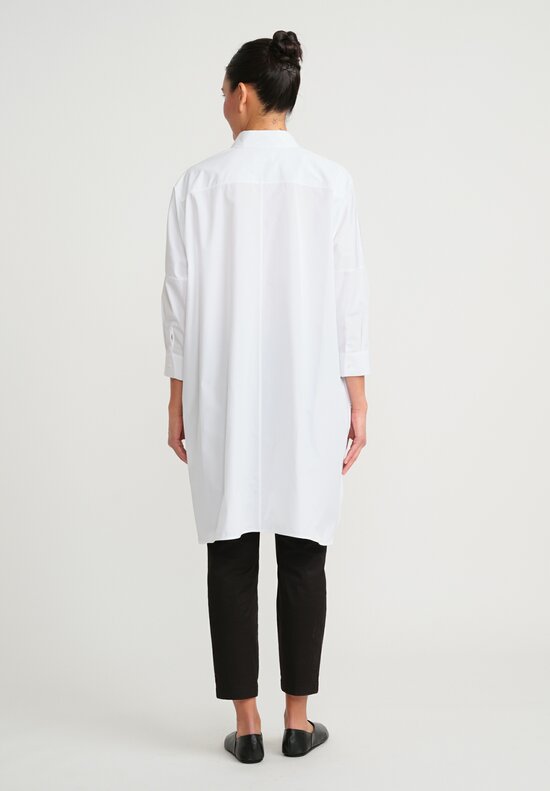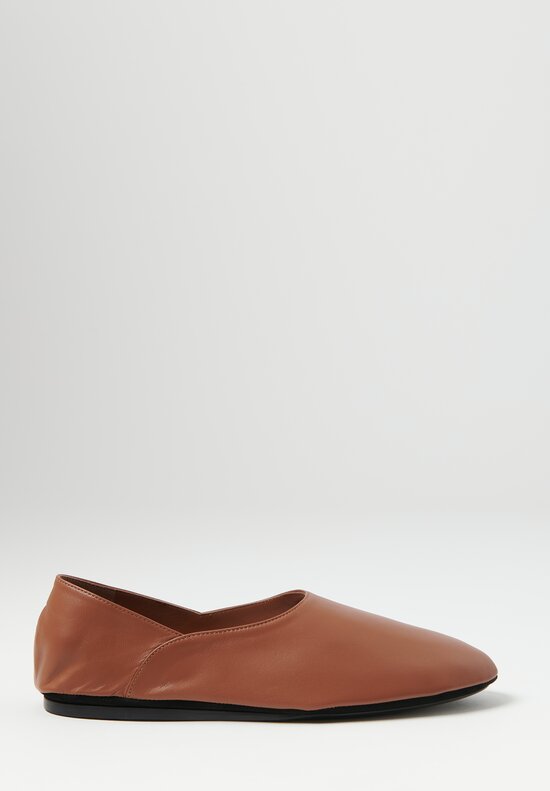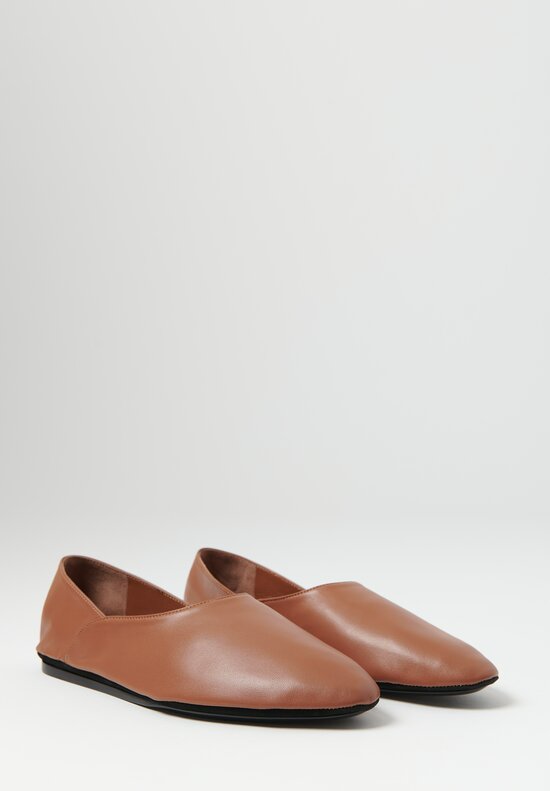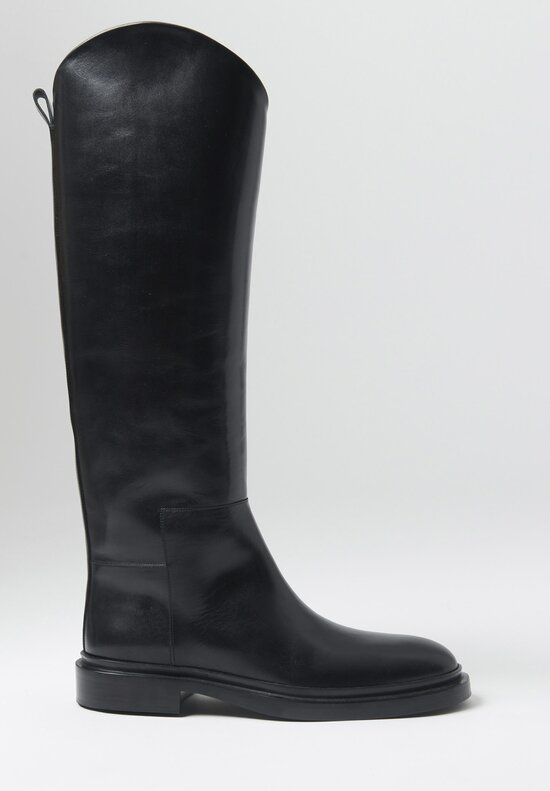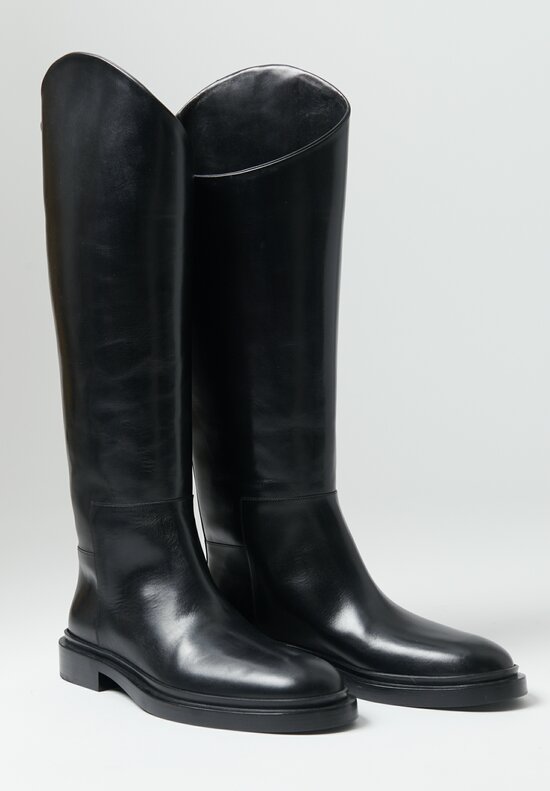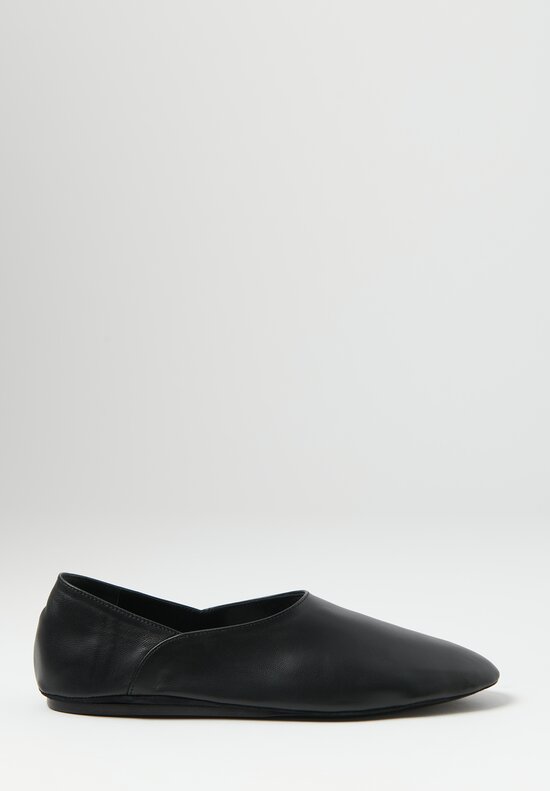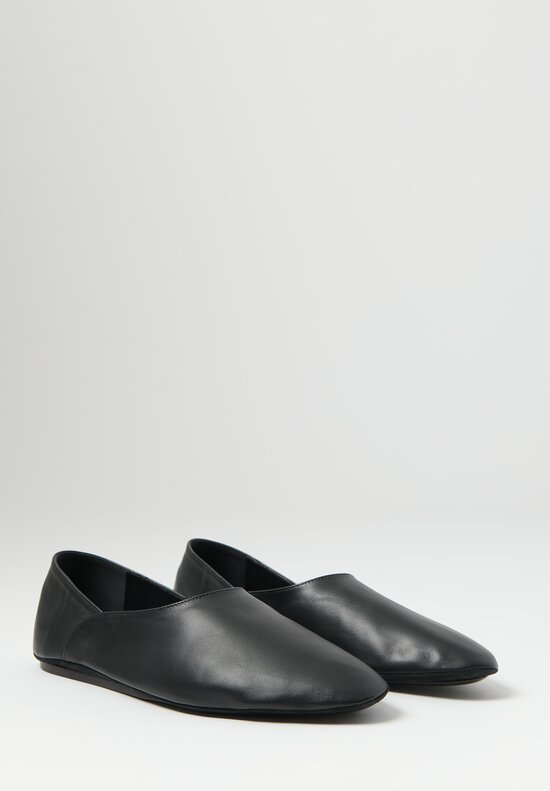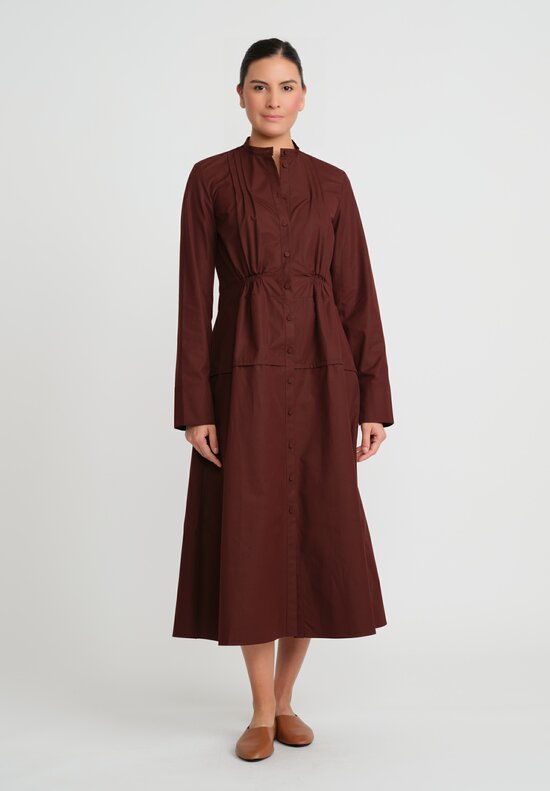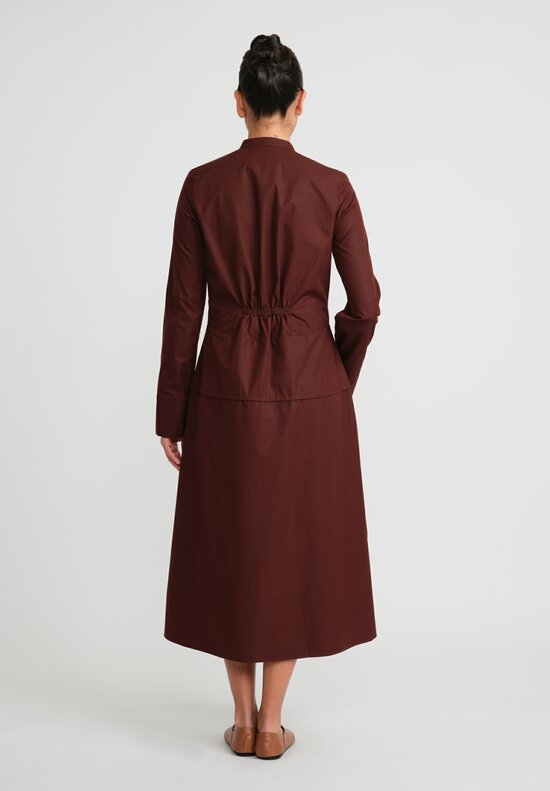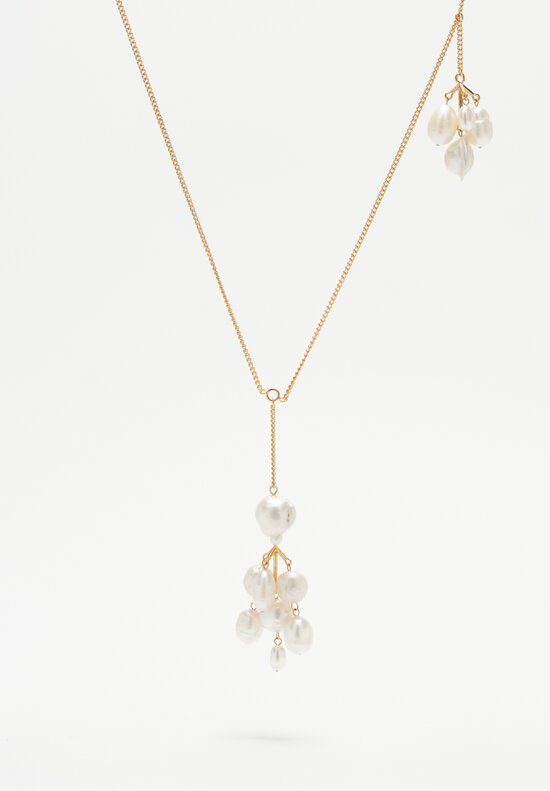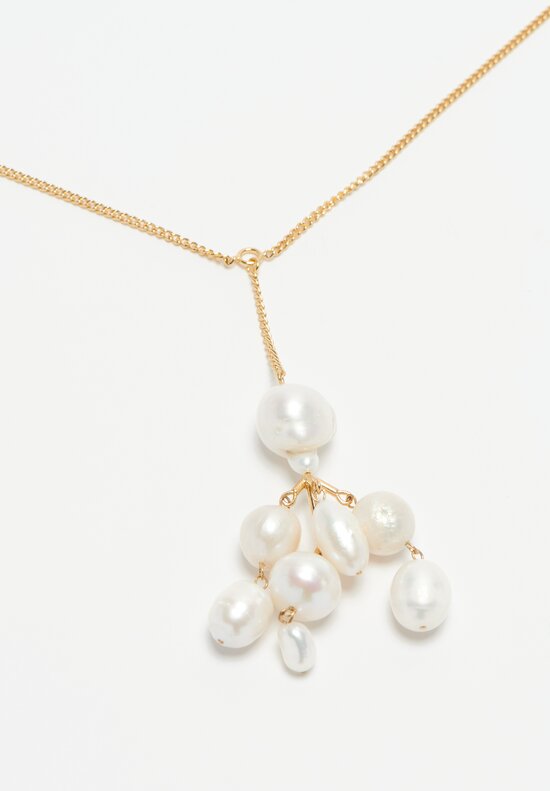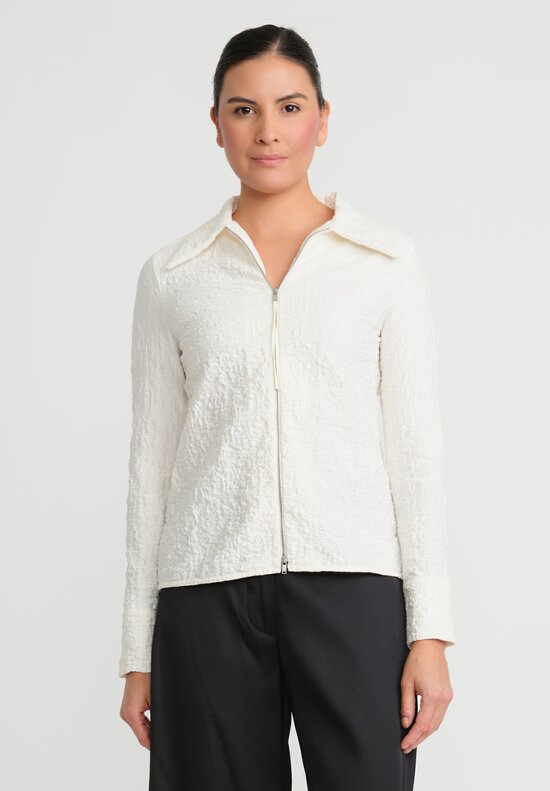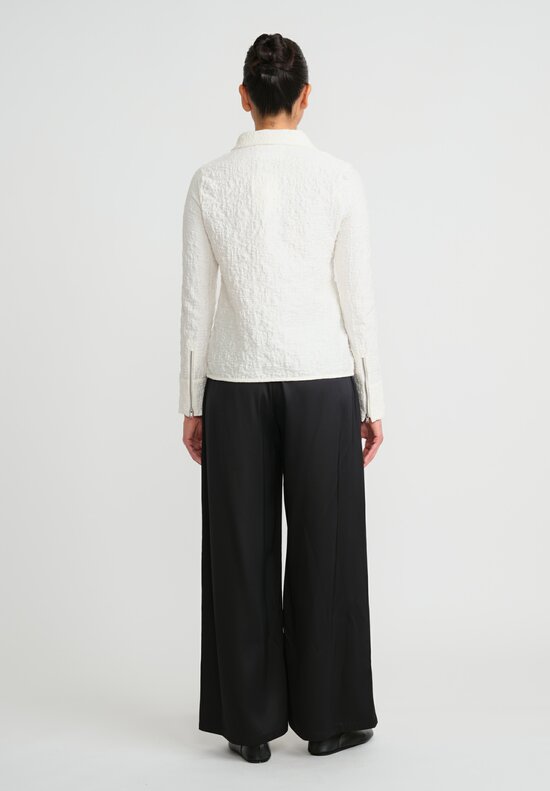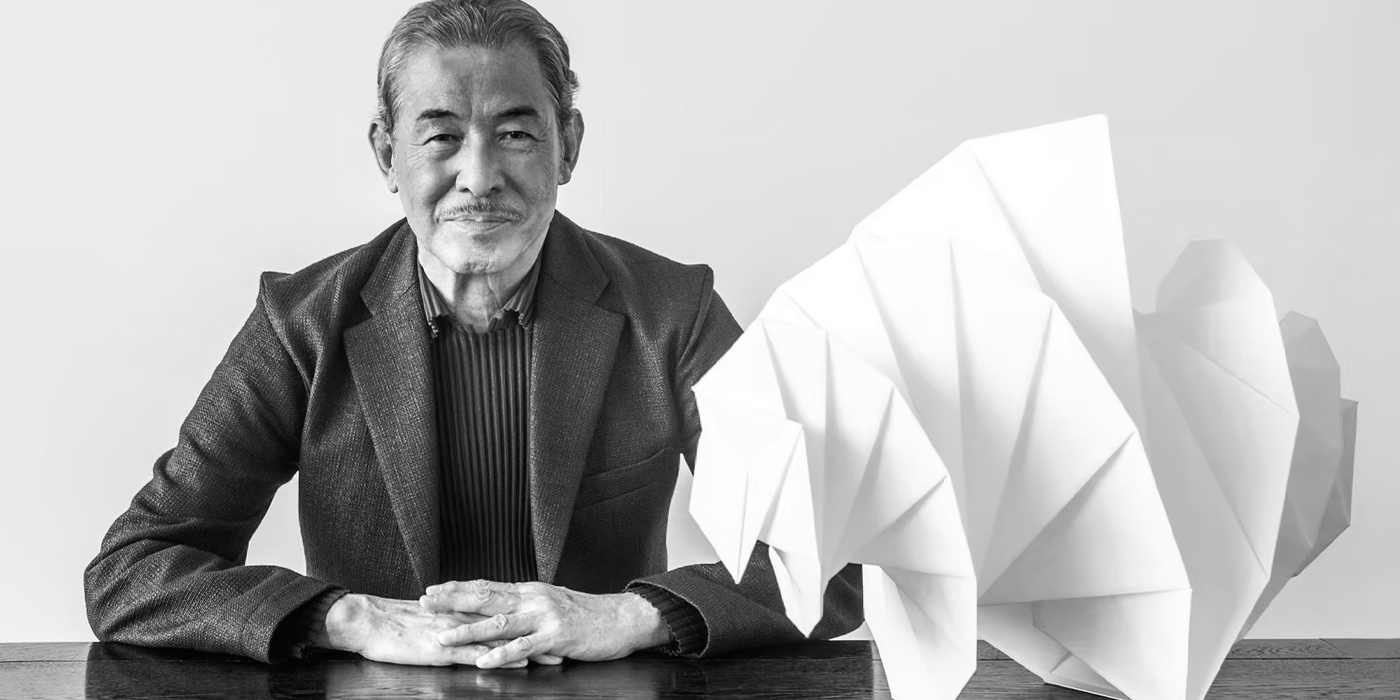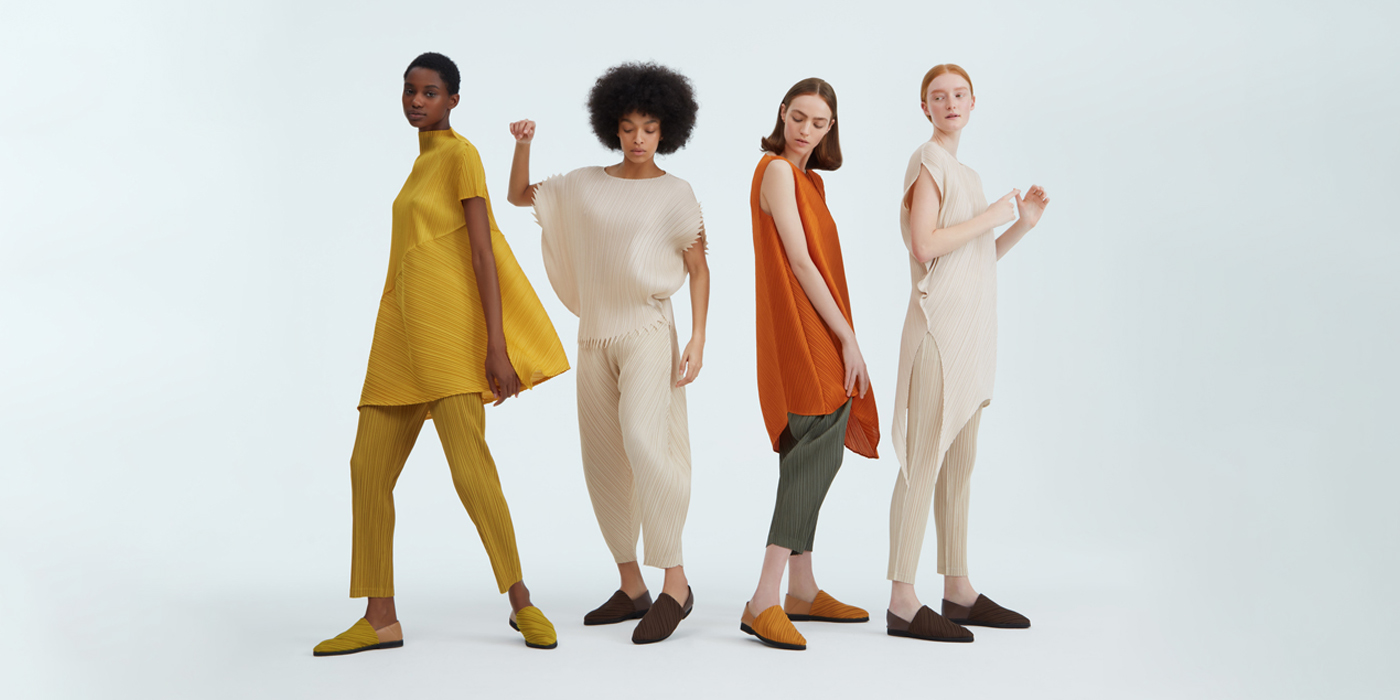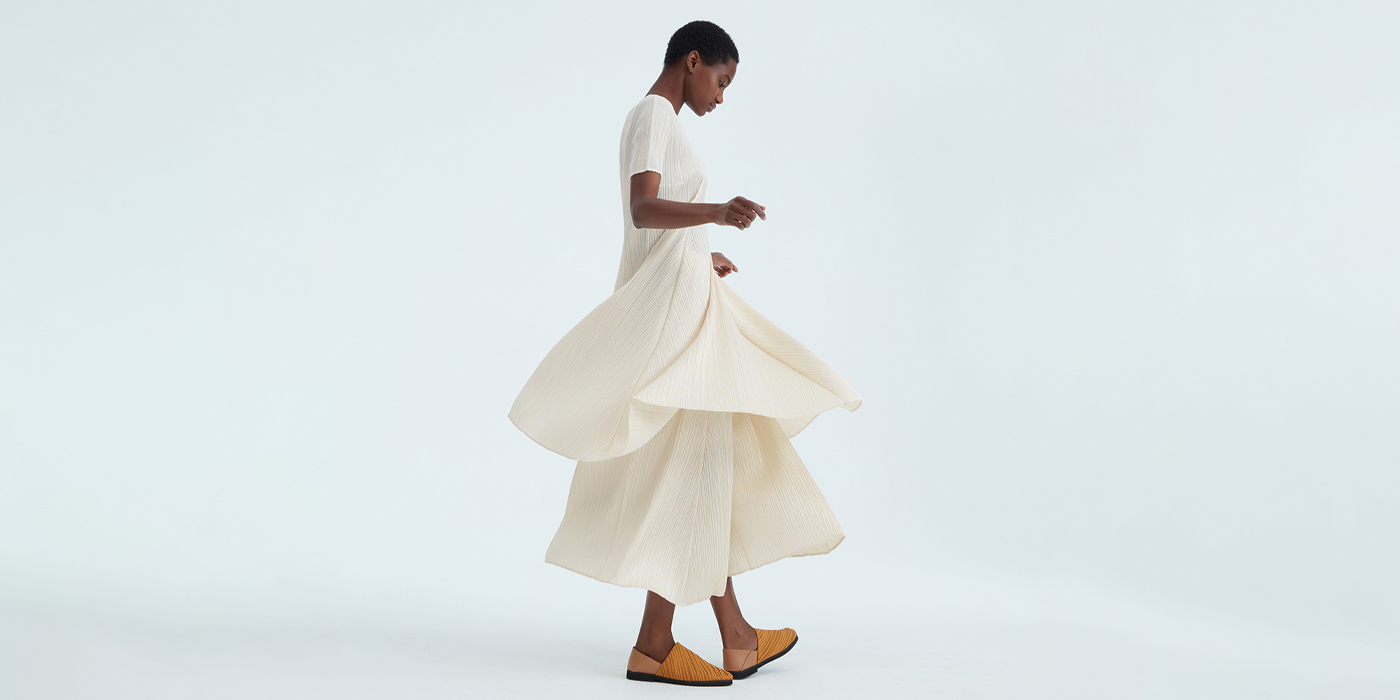Jil Sander+
Milan, Italy
After graduating in 1963 from a textile-engineering school in Krefeld, Germany, Jil Sander worked as a fashion editor before opening a luxury clothing boutique in Hamburg at the age of 24.
Launched in 1968 by Jil Sander, the eponymous fashion house presented its first women’s collection in 1973. With her timelessly elegant and minimalist aesthetic, Jil Sander revolutionized women’s ready-to-wear in the 1980s, offering refined, expertly tailored garments in a neutral color palette as an antidote to the exceedingly embellished looks of the era. “For me, it was all about form, function and proportion. I never just wanted to decorate,” Sander said.
Jil Sander has been heralded as the “queen of lean,” producing collection after collection of sophisticated, highly considered garments that eschew excess. Today the brand is helmed by Lucie and Luke Meier, a husband-wife duo and former lead designers for Dior and Supreme. Their fresh perspective on the house’s 50-year-oeuvre continues a legacy of unconditional dedication to innovative materials and exceptional craftsmanship.
Jil Sander
Milan, Italy
After graduating in 1963 from a textile-engineering school in Krefeld, Germany, Jil Sander worked as a fashion editor before opening a luxury clothing boutique in Hamburg at the age of 24.
Launched in 1968 by Jil Sander, the eponymous fashion house presented its first women’s collection in 1973. With her timelessly elegant and minimalist aesthetic, Jil Sander revolutionized women’s ready-to-wear in the 1980s, offering refined, expertly tailored garments in a neutral color palette as an antidote to the exceedingly embellished looks of the era. “For me, it was all about form, function and proportion. I never just wanted to decorate,” Sander said.
Jil Sander has been heralded as the “queen of lean,” producing collection after collection of sophisticated, highly considered garments that eschew excess. Today the brand is helmed by Lucie and Luke Meier, a husband-wife duo and former lead designers for Dior and Supreme. Their fresh perspective on the house’s 50-year-oeuvre continues a legacy of unconditional dedication to innovative materials and exceptional craftsmanship.
Issey Miyake Pleats Please
Tokyo, Japan
“One piece of cloth” is the underlying guiding principle of the legacy of Issey Miyake. The brand’s unwavering approach to creation is the freedom to have ideas, unconstrained by any preexisting rules or framework and to be able to make them realities through a tenacious process of research and experimentation. Continually blurring the lines between art and fashion, Issey Miyake’s clothing is equally at home in museum collections as well as personal wardrobes.
Issey Miyake’s first collection was launched in New York in 1971 and shown in Paris Fashion Week in 1973. With his work, Issey Miyake broke the boundaries between East and West and pursued “the body, the fabric covering it and a comfortable relationship between the two” as a fundamental concept, both shocking and resonating with people the world over. Issey Miyake has grown to include a vast number of creative personnel and innovative new techniques, but its core design style – creating clothes from original materials starting with the research of a single thread and a single piece of cloth – transcends generations.
Issey Miyake introduced unique pleating technology into the line in 1988, experimenting and refining the pleating process until the pleats line became a brand of its own, Pleats Please Issey Miyake, in 1994. Traditional pleated clothing is made by first pleating fabric, then cutting and sewing the individual garments. Issey Miyake reversed this process, developing the technology to pleat the garment after it is cut and sewn. Made from single pieces of fabric, the garments are initially assembled three times larger than the finished product. The piece is then sandwiched between two layers of washi paper and hand fed into a heat press. The garment emerges with permanent pleats, enabling both texture and form to be created simultaneously.
Pleats Please is a brand of elegant yet versatile, comfortable and beautiful clothing that embraces permanent pleats. These clothes combine functionality – light and wrinkle-proof, they don’t require dry-cleaning – with a versatility that makes them suitable for all settings in your daily life. This brand reflects Issey Miyake’s fundamental concept that “design is not for philosophy, but for life,” and continues to evolve today.
